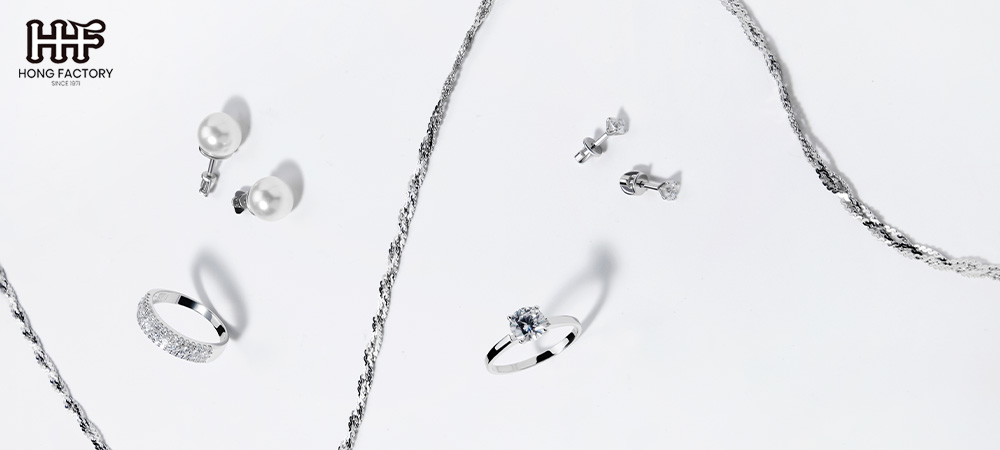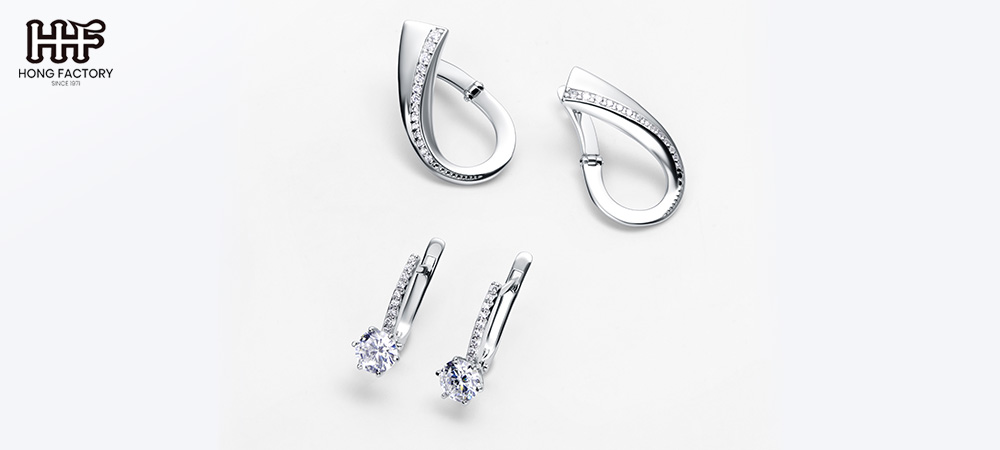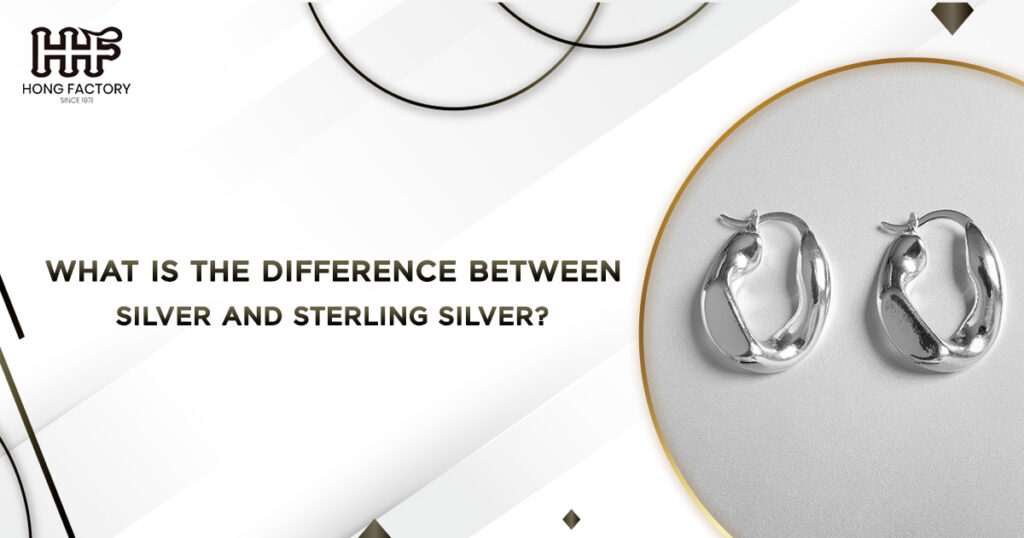Silver and sterling silver are often used interchangeably, but they possess distinct characteristics that set them apart. Pure silver, also known as fine silver, is composed of 99.9% silver, making it soft and malleable, ideal for intricate designs but less durable for everyday use. In contrast, sterling silver is an alloy containing 92.5% silver, with the remaining 7.5% typically consisting of other metals, such as copper. This blend enhances its strength and durability, making it more suitable for jewelry, utensils, and decorative items.
The addition of other metals in sterling silver also influences its appearance and resistance to tarnish. Understanding these differences is crucial for making informed decisions when purchasing silver items, ensuring that you select the right type for your needs and preferences. Whether you seek the purity of fine silver or the resilience of sterling silver, each has its unique advantages and applications.
Understanding Silver
Pure Silver
Pure silver, also known as fine silver, is a precious metal that is highly valued for its beauty and rarity. It is composed of 99.9% silver, with the remaining 0.1% consisting of trace elements. Pure silver is known for its lustrous white appearance and its high level of conductivity, making it a popular choice for various industrial applications as well as in jewelry.
Properties of Pure Silver
- Softness : Pure silver is relatively soft and malleable, which makes it easy to shape into intricate designs. However, this softness also means that pure silver jewelry can be prone to scratches and dents.
- Tarnish Resistance : Pure silver is less prone to tarnishing compared to other metals, but it can still develop a dull appearance over time if not properly cared for.
- Hypoallergenic : Pure silver is hypoallergenic, making it a suitable choice for individuals with sensitive skin or allergies to certain metals.

Understanding Sterling Silver
Composition of Sterling Silver
Sterling silver is an alloy composed of 92.5% silver and 7.5% other metals, typically copper. This combination enhances the durability and strength of the metal while retaining the desirable properties of silver. The addition of copper or other metals makes sterling silver more suitable for everyday wear and use in jewelry.
Properties of Sterling Silver
- Durability : The addition of copper to sterling silver significantly increases its hardness and durability, making it less prone to scratches and dents compared to pure silver.
- Tarnish : Sterling silver is more prone to tarnishing than pure silver due to the presence of copper. However, regular cleaning and proper storage can help maintain its shine and luster.
- Affordability : Sterling silver is generally more affordable than pure silver, making it a popular choice for a wide range of jewelry items.
Key Differences Between Silver and Sterling Silver
Purity
The primary difference between silver and sterling silver lies in their purity. Pure silver contains 99.9% silver, while sterling silver contains 92.5% silver and 7.5% other metals. This difference in composition affects their properties, durability, and suitability for different types of jewelry.
Durability and Strength
Pure silver is softer and more malleable, making it ideal for intricate designs but less suitable for everyday wear. Sterling silver, on the other hand, is more durable and resistant to damage, making it a better choice for items that will be worn frequently.
Tarnish Resistance
While pure silver is less prone to tarnishing, sterling silver can tarnish more easily due to the presence of copper. However, with proper care and maintenance, both types of silver can retain their beauty and shine.
Cost
Sterling silver is generally more affordable than pure silver, making it a popular choice for those looking for high-quality jewelry at a lower price point. The added durability of sterling silver also means that it can offer better value for money in the long run.
Choosing Between Silver and Sterling Silver
Consider Your Lifestyle
When choosing between silver and sterling silver, consider your lifestyle and how you plan to wear the jewelry. If you need a piece that can withstand daily wear and tear, sterling silver may be the better option due to its enhanced durability. For special occasions or pieces that will be worn less frequently, pure silver can offer a more luxurious and refined appearance.
Budget
Your budget will also play a significant role in your decision. Sterling silver is more affordable and offers excellent value for money, while pure silver is more expensive but provides a higher level of purity and prestige.
Allergies and Sensitivities
If you have sensitive skin or metal allergies, pure silver may be the better choice due to its hypoallergenic properties. However, many people can wear sterling silver without any issues, so it is worth considering both options.
Caring for Silver and Sterling Silver Jewelry
Cleaning Pure Silver
To clean pure silver jewelry, use a soft cloth and a gentle silver cleaner. Avoid abrasive materials that can scratch the surface. Regularly polish your pure silver pieces to maintain their shine and prevent tarnish.
Cleaning Sterling Silver
Sterling silver requires a bit more maintenance due to its tendency to tarnish. Use a silver polishing cloth or a mild silver cleaner to remove tarnish and restore its luster. Store sterling silver jewelry in a cool, dry place, preferably in an anti-tarnish pouch or a lined jewelry box.
Preventing Tarnish
Both pure silver and sterling silver can benefit from preventive measures to reduce tarnish. Avoid exposing your silver jewelry to harsh chemicals, such as chlorine and household cleaners. Remove your jewelry before swimming, bathing, or engaging in activities that may cause excessive sweating.

Popular Uses of Silver and Sterling Silver in Jewelry
Pure Silver Jewelry
Pure silver is often used for high-end, luxury jewelry pieces that showcase its natural beauty and luster. It is commonly found in :
- Fine Jewelry : Rings, necklaces, bracelets, and earrings that are designed for special occasions.
- Collectible Items : Coins, bars, and other collectible items that emphasize the purity and value of silver.
- Artisan Jewelry : Handcrafted pieces that highlight the unique properties of pure silver.
Sterling Silver Jewelry
Sterling silver is widely used in a variety of jewelry items due to its affordability and durability. Common uses include :
- Everyday Jewelry : Rings, necklaces, bracelets, and earrings that are designed for daily wear.
- Fashion Jewelry : Trendy and stylish pieces that offer a high-quality look at an affordable price.
- Personalized Jewelry : Customizable items such as name necklaces, engraved rings, and charm bracelets.
Conclusion
what is the difference between silver and sterling silver
In summary, understanding the difference between silver and sterling silver is essential for making informed decisions when purchasing jewelry. Pure silver offers a higher level of purity and a luxurious appearance, while sterling silver provides enhanced durability and affordability. By considering your lifestyle, budget, and personal preferences, you can choose the type of silver that best suits your needs and enjoy beautiful, high-quality jewelry for years to come.
Whether you opt for the timeless elegance of pure silver or the practical benefits of sterling silver, both options offer unique advantages that can enhance your jewelry collection. With proper care and maintenance, your silver and sterling silver pieces will continue to shine and bring joy for generations.

